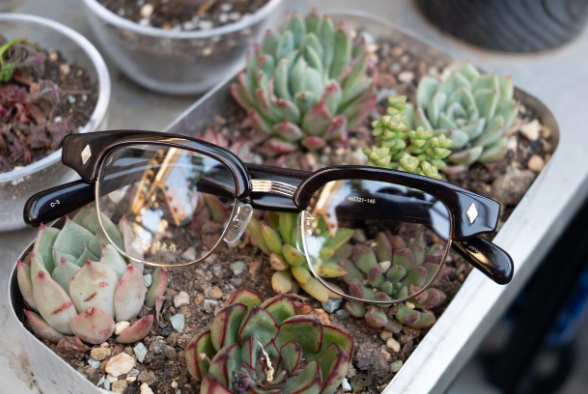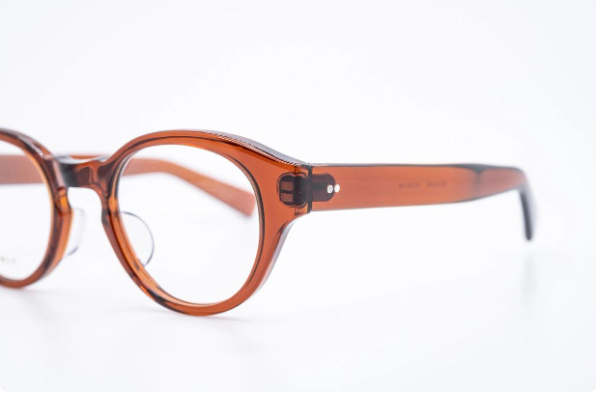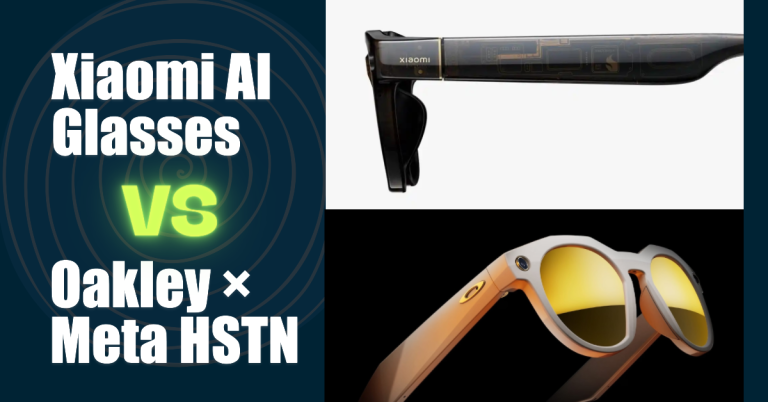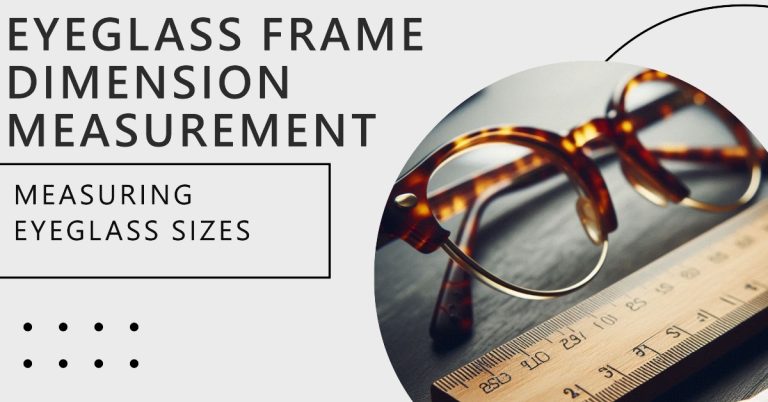Celluloid glasses, once a staple in the world of eyewear, offer a fascinating glimpse into the history and evolution of synthetic plastics. Originally created in the late 19th century as a cheaper alternative to natural ivory, these glasses are composed mainly of cotton and natural camphor mixed with plasticizers, representing one of the closest approximations to “natural” plastic materials.
The Rise and Decline of Celluloid Glasses in Eyewear Manufacturing
These glasses were celebrated for their warm touch, attractive patterns, and the unique gloss that developed with prolonged wear. However, they had a significant flaw—their low ignition point. With a combustion temperature around 130 degrees Celsius, they were safe for everyday wear but posed risks during the manufacturing process. As eyewear production shifted towards mechanization and automation, the use of these glasses declined, leading Western countries to phase out their production, with Japan remaining one of the few countries continuing their production.
The lengthy production cycle, dictated by the material’s handling and safety requirements, is a key reason for the scarcity of these glasses today. This has made them a rare find in the market, overshadowed by materials that are more adaptable to modern manufacturing techniques.

Celluloid’s Close Relative: Acetate
As celluloid’s popularity waned, a closely related material took its place: cellulose acetate. Known industrially as “cellulose diacetate,” it bears a close resemblance to celluloid (industrially known as nitrocellulose) but differs primarily in its solvents, making up about 30% of the material’s composition. This transition marked a significant shift in eyewear manufacturing from using a highly flammable material to a more stable and manageable one.

The Cost of Craftsmanship
The shift away from celluloid did not diminish the allure of handcrafted celluloid eyeglasses, which continue to command a premium price. The higher costs are attributed to the extensive labor and time required to handcraft each pair, reflecting the dedication and skill of the artisans who make them. Many wearers of celluloid glasses report an exceptional comfort and fit, a testament not only to the material but also to the craftsmanship involved. It is likely that if the same care were applied to making acetate frames, the comfort level would be comparable.

Conclusion
Celluloid glasses represents a nostalgic chapter in the history of eyewear, symbolizing a bridge between natural materials and the advent of synthetic plastics. While its use has declined due to practical manufacturing concerns, the remaining examples of celluloid glasses stand as artifacts of a bygone era, cherished for their unique properties and the meticulous craftsmanship they require.





